Serenity amid COVID-19 Infodemic
Spread knowledge, not fear
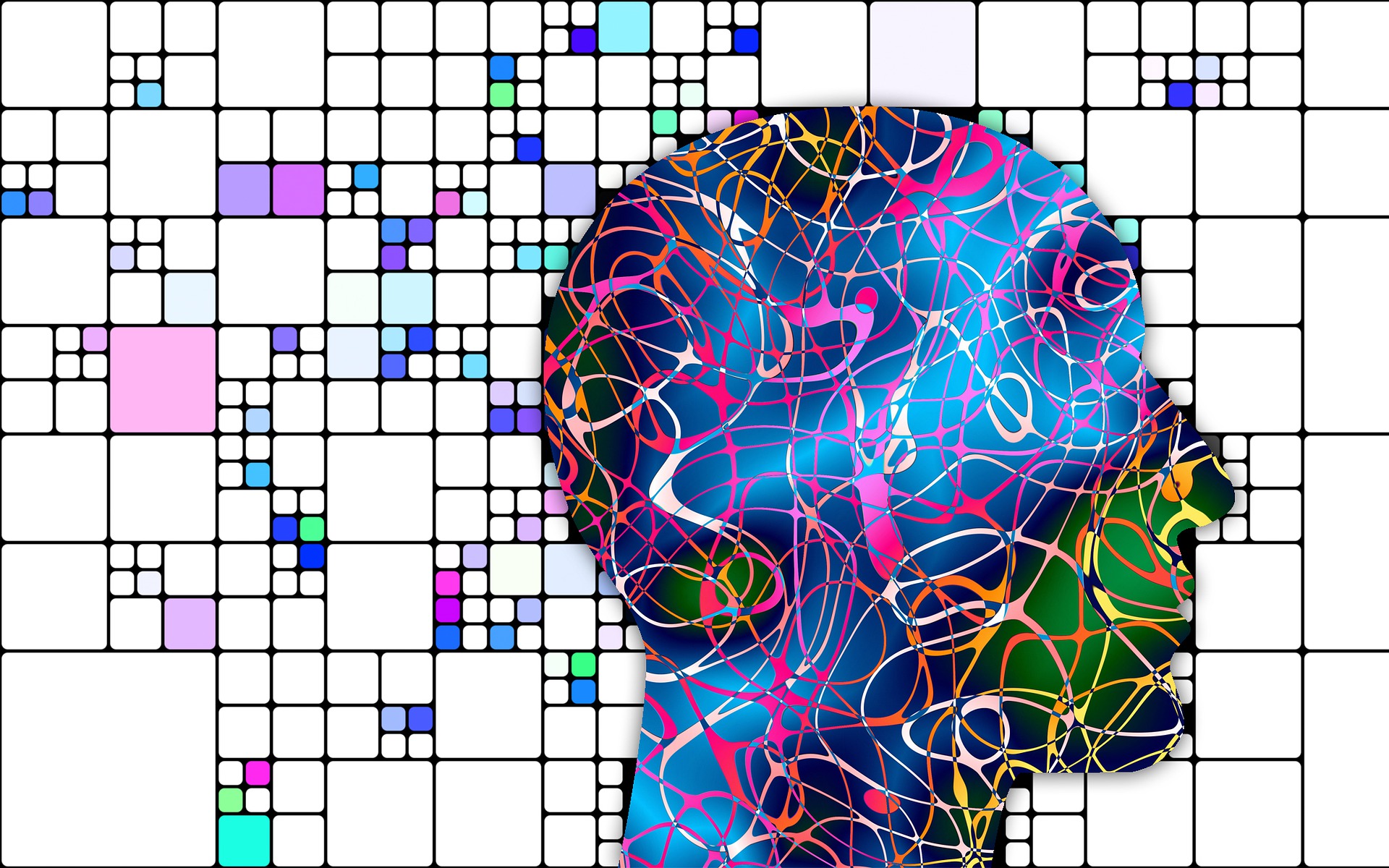
Cover Photo by Gerd Altmann from Pixabay
There are decades where nothing happens, and there are weeks where decades happen. – Vladimir Lenin
In early February 2020, WHO released a situation report with the term Infodemic. In turbulent times, we get info through a fire hose–some misleading and some valuable. Without principles to interpret rapidly changing situations, anxiety can creep up on us. It clouds our judgment and paralyzes our actions. Having good mental health is crucial to sustaining a healthy immune system.
My opinions here should not be inferred or considered as medical advice. For medical advice, please refer to some official source like the Ministry of Health.
Table of Contents
- What I know and don’t know
- Decision making under uncertainty
- He says this - She says that - How I comprehend
- Examples of underlying assumptions
- Reduce COVID-19 anxiety
- What’s coming next?
- Reference for curious minds
What I know and don’t know
My knowledge is mostly limited to:
- My own actions on preparedness and response since January 2020
- Complex system analysis
- Probability and statistics for decision making under uncertainty
I have virtually no knowledge of:
- Epidemiology: pathogen, virus mutation,…
- Public health system: policies, epidemic responses,…
Decision making under uncertainty
I’ve been through various technological hype cycles, e.g., the Crypto bubble in 2018. Those occasions provide me with deliberate practice for both-and rather than either-or thinking. Some contradictions at first sight can turn out to be interconnected. We’re just not conscious enough to see the connection.
Two effective principles for information interpretation and decision making that I’ve learned:
Principle 1. The map is not actual terrain. Any model is just as good as the underlying assumptions put into it. When the assumptions hold, the model is useful. When they are invalid, the model can lead to an illusion of control or an actual loss of adaptability. It’s also worth emphasizing the keyword–"underlying". “Underlying” means the relationship between those assumptions and our claims can go unnoticed.
Principle 2. When the map and the terrain differ, follow the terrain and update the map. Grasp insights from a class of models rather than a specific model. Models mainly help high-order thinking and question assumptions. They can never fully capture the emergence of complex systems.
He says this - She says that - How I comprehend
Up to now, I’ve seen two perspectives on the pandemic response in the mainstream.
| – | Probabilistic Risk Modeling | Evidence-based Modeling |
|---|---|---|
| Reasoning | Fat tail risk[6]. Survive first. | Cost-benefit analyses. Be accurate first[4]. |
| Action | Overreact early to rebound quickly with less cost | Don’t be overreacting until we have more evidence |
| Decision making | Save BOTH health AND economy | Select EITHER health OR economy |
| Overall mitigation approach | Cut the tail. Drastically prune contact networks to limit super-spreader events. Act nimbly and rigorously to search and leverage extraordinary interventions[2]. | Optimize based on deterministic parameters that are supposed to have strong evidence (e.g., fatality rate, reproductive ratio,…). If this leads to devastating outcomes, then accept what will happen due to a belief that nothing can be done. |
By the end of January, fat tail risk modeling[5] caught my attention. Our global transportation and contagious asymptomatic cases posed emergent pathogens and asymmetric uncertainty.
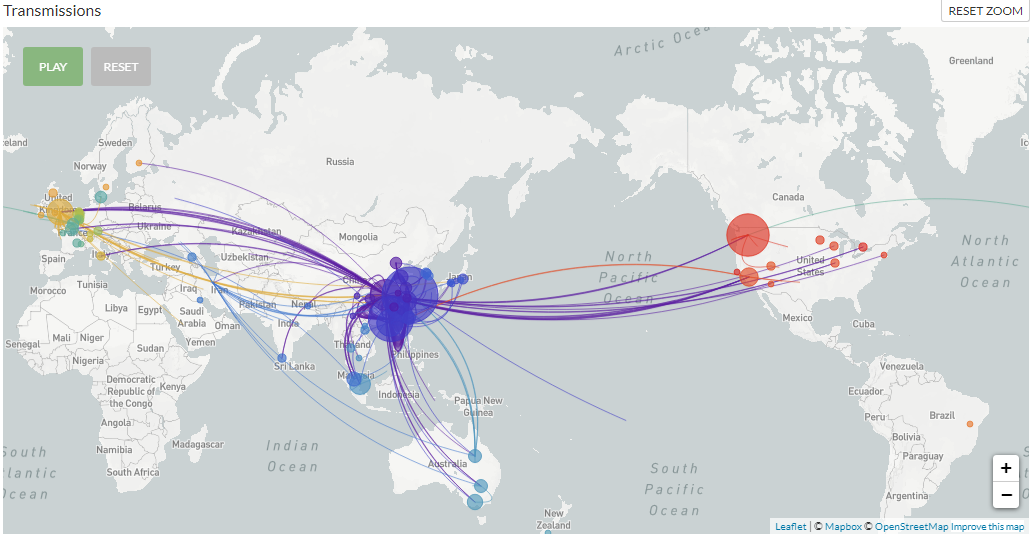 Genomic epidemiology of novel coronavirus - Transmissions from 2019-12-02 to 2020-02-01. Source: Nextstrain
Genomic epidemiology of novel coronavirus - Transmissions from 2019-12-02 to 2020-02-01. Source: Nextstrain
Unlike a hurricane, epidemic dynamics are not an external force. Proportionally ramping up defense measures against that would be an oversimplified solution. The dynamics are endogenously generated. That means our behaviors can affect its magnitude and trajectory. The faster we take action, the lower the cost we will bear.
Precautionary decisions do not scale. Collective safety may require excessive individual risk avoidance, even if it conflicts with an individual’s own interests and benefits.[3] – Norman, J., & Taleb, N. N.
 Pruning contact networks. Image credit: Siouxsie Wiles & Toby Morris
Pruning contact networks. Image credit: Siouxsie Wiles & Toby Morris
My other reason for taking evidence-based modeling with caution: the financial crisis 2008. By 2008, the crisis had slipped below the radar of mass media and theoretical models. I have been learning those hard lessons of data-driven decision making. Complacency kills the cat. Over-optimization creates blind spots in our vision.
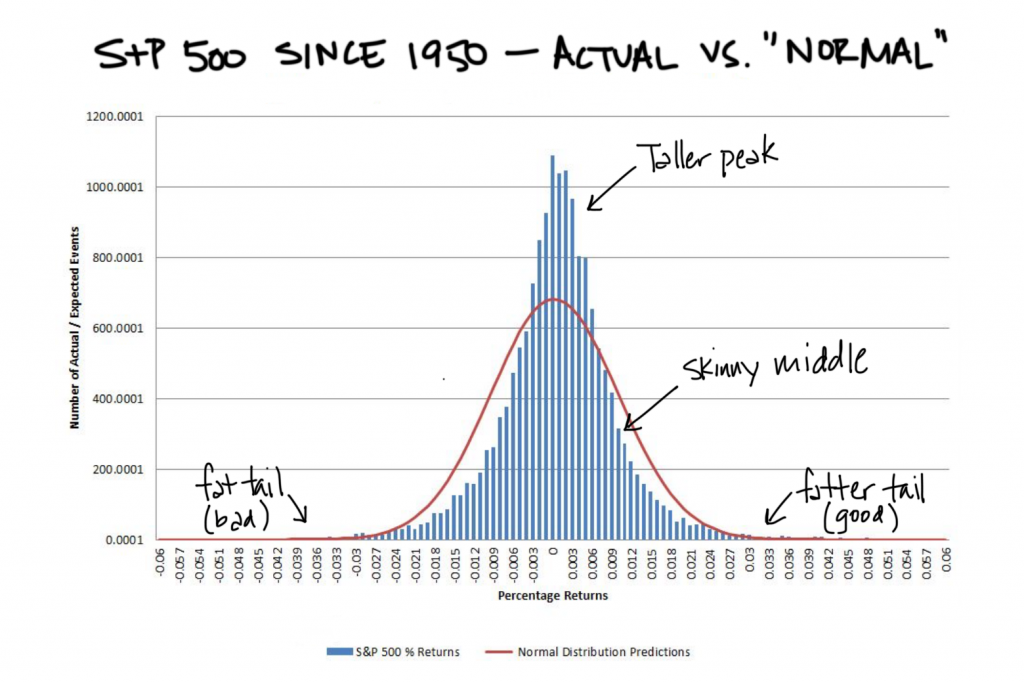 Fat tail risk in the financial crisis 2008. Image credit: Jason T Voiovich
Fat tail risk in the financial crisis 2008. Image credit: Jason T Voiovich
Examples of underlying assumptions
Herein I laid down a few popular claims with their underlying assumptions.
Claim #1. Tossing coin
If tossing a coin 100 times in a row, the probability to get a head is 50%. If we toss 123 times, it’ll be still 50%.
In real life, the correct answer is more than 50%.
Underlying assumptions:
- The person, who tosses the coin, has no incentive to cheat the way he tosses it.
- The coin is not loaded with a favor to the head.
In a lab environment, we tend to fix parameters with assumptions. A complex system or a complex situation like the COVID-19 pandemic is not a textbook exercise. Invalid assumptions or data bias may yield catastrophes.
Claim #2. Fatality rate
Next, the northeastern Italian town of Vò, near the provincial capital of Padua. On March 6, all 3,300 people of Vò were tested, and 90 were positive, a prevalence of 2.7%. Applying that prevalence to the whole province (population 955,000), which had 198 reported cases, suggests there were actually 26,000 infections at that time. That’s more than 130-fold the number of actual reported cases. Since Italy’s case fatality rate of 8% is estimated using the confirmed cases, the real fatality rate could in fact be closer to 0.06%. – Wall Street Journal | Is the Coronavirus as Deadly as They Say?
Underlying assumptions:
- Characteristics of the sample set, such as age or health conditions, don’t matter.
- The timing when we take the sample set doesn’t matter.
- All test protocols are equal.
- No other environmental factors or events can influence the fatality rate.
Human disease contains many biological factors. Taking averages of parameters regardless of context can lead us to delusions.
Claim #3. Herd immunity
With herd immunity, we can achieve both long-term health and an ongoing economy.
Underlying assumptions:
- All recovered cases have no organ damage or lasting consequences.
- Hospitalization duration and community infection rates can always be managed. Super spreaders cannot cascade out of control. Thus those events can happen within the capacity of the healthcare system.
- The conferred immunity will last long with 0% reinfection rate.
- The behavior of individuals is static. The herd spread can be thereby framed within some boundary.
- The cost of inaction is lower than the cost of overreaction.
Absence of evidence is not evidence of absence. The point is we tend to stop searching for evidence against our claim.
Reduce COVID-19 anxiety
Our cognitive functions prefer linear growth and known thinking processes. A sudden shock of these routines may cause mental fatigue. Below are some phenomena that I have seen from myself and people around me since January.
Losing temporal landmarks
We use temporal landmarks to navigate time. The harsh reality is that we are living in a new timezone: Coronavirus timezone.
Just like the way we rely on landmarks to navigate space. To get to my office, turn left at the next gas station. The gas station is a spatial landmark. The first day of a year is a temporal landmark. Such temporal landmarks often shake us out of the tree to look at the entire forest.
When the industrial clock is temporarily irrelevant. It’s necessary to corral time by ourselves. A clear and tangible purpose sharpens our focus.
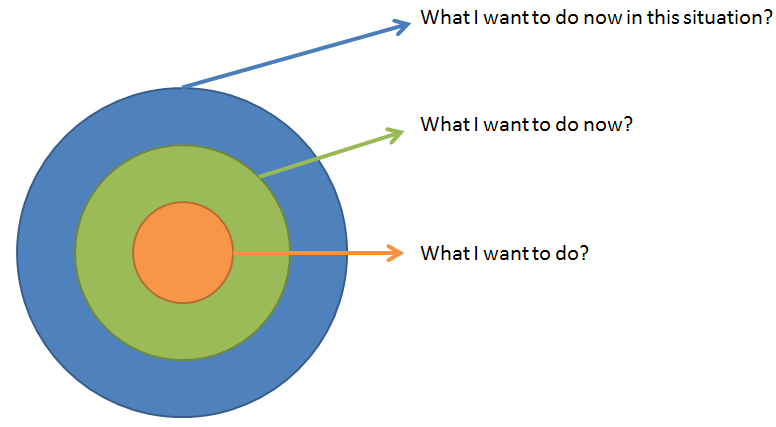
The above figure depicts how we usually compress space and time in our reasoning. The pandemic is a quest to the very question: “What I want to do regardless of space and time?”, not an excuse for inaction.
Mind-wandering
Mind-wandering is an experience of spontaneous thought or out-of-control attention. Your thoughts cannot remain on a single topic for a long time.
In an unconscious effort to make reality more predictable, we yearn for signals. Non-stop checking news about COVID-19 is a symptom of mind-wandering. Consuming unactionable or disconnected information makes us suffer cognitive overload, and thereby anxiety.
Exponential growth bias
There is a old story about a wise man and a ruler. The wise man requested his ruler to reward him with some wheat grains filled on a chessboard of 64 cells. On the first cell, put 1 grain. On the second cell, put 2 grains. On the later cell, put an amount as double as one on the precedent cell.
The ruler laughed it off, and confidently accepted the challenge. He then realized the wheat stock in his territory was not enough to fill all cells of the chessboard.
1 + 2 + 4 + … + 263 ~ 780 million tonnes of wheat in 2019 metrics.
This bias also applies to the misunderstanding of compound interest in savings.

The story of wheat and chessboard. Image credit: @purposefocuscommitment
Such bias made it hard to perceive the growth of infection during the early stages of the pandemic. Any reproductive ratio R0 > 1 is enough to cause exponential growth. The effort of social distancing or shelter-in-place is to reduce the ratio R0 to less than 1.
Let’s assume that, on average, the reproductive ratio R0 is about 2.5 now. One infected person will spread the disease to 2.5 other people. If the infected person reduces their physical contact with others by 50%. After 5 days, the amount of 50% less (1.25) will be infected.
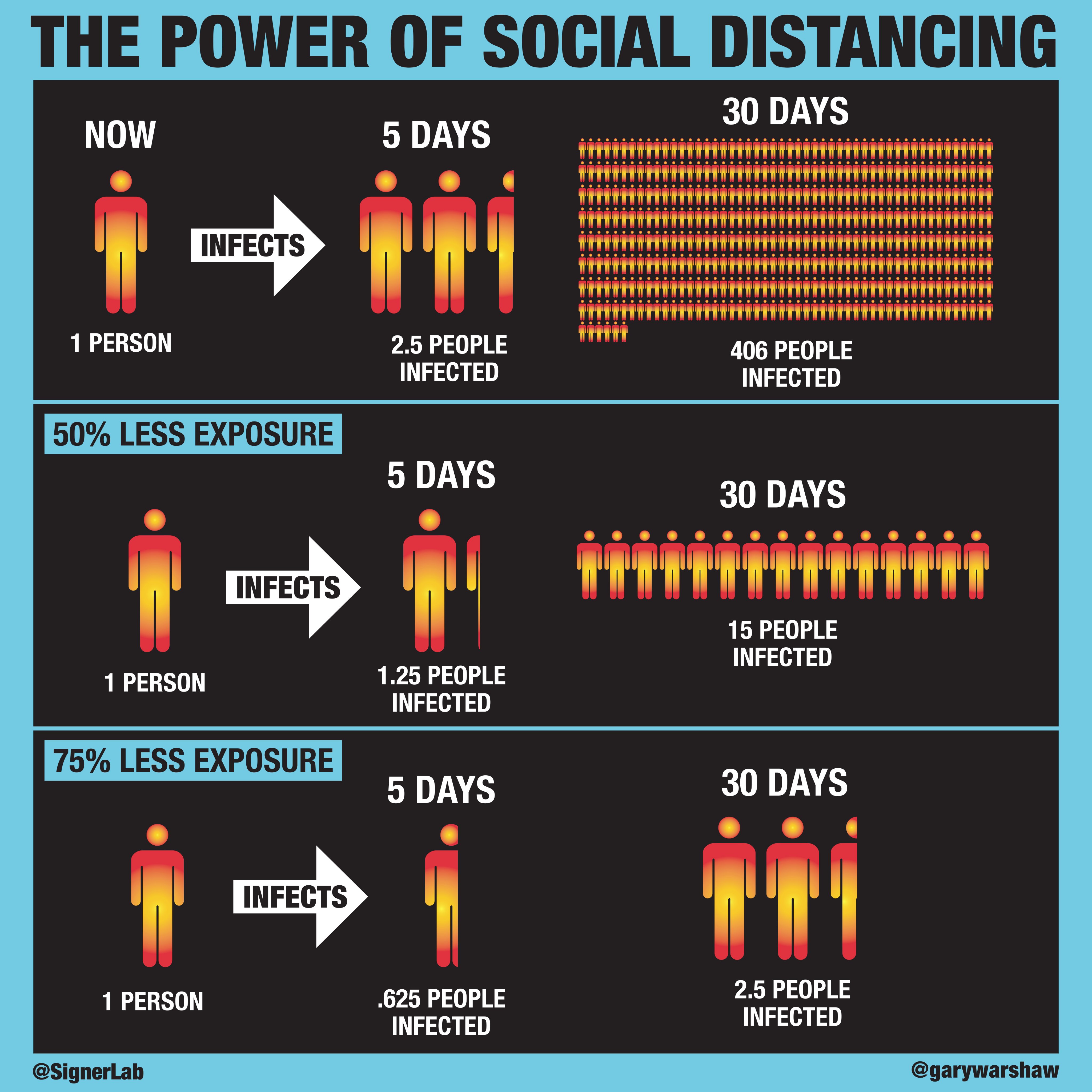
The power of social distancing. Image credit: Gary Warshaw
What’s coming next?
Our actions in the present shape the future.
COVID-19 is not a black swan event. It’s a catalyst that exposes a series of foundational problems. If the underlying economy is healthy, it will be booming once the pandemic is contained. The Roaring Twenties followed the Spanish Flu 1918. Using elevators without touch or wearing masks in public will become our new “normal”.
Stay safe and healthy. Learn to adapt.
Reference for curious minds
To keep this post concise, I will only leave here enough keywords and critical studies. You can follow their citations and data sources to glean your own big picture.
Complex system analysis
[1] Cook, R. I. (1998). How complex systems fail. Cognitive Technologies Laboratory, University of Chicago. Chicago IL. [2] Meadows, D. H. (1999). Leverage points: Places to intervene in a system.
Fat tail risk
[3] Norman, J., & Taleb, N. N. (n.d.). Ethics of Precaution: Individual and Systemic Risk. Retrieved March 25, 2020, from https://www.academia.edu/42223846/Ethics_of_Precaution_Individual_and_Systemic_Risk [4] Harry Crane (2020). Naive Probabilism. RESEARCHERS.ONE, https://www.researchers.one/article/2020-03-9. [5] Taleb, N. N. (2020). Statistical Consequences of Fat Tails: Real World Preasymptotics, Epistemology, and Applications. ArXiv:2001.10488 [q-Fin, Stat]. http://arxiv.org/abs/2001.10488 [6] Nassim Nicholas Taleb and Pasquale Cirillo (2020). Tail Risk of Contagious Diseases. RESEARCHERS.ONE, https://www.researchers.one/article/2020-03-17.
COVID-19 datasets
[7] Semantics Scholar. (n.d.). CORD-19 | Semantic Scholar. Retrieved March 24, 2020, from https://pages.semanticscholar.org/coronavirus-research [8] World Economic Forum. (n.d.). Strategic Intelligence | World Economic Forum. Stategic Intelligence. Retrieved March 25, 2020, from https://intelligence.weforum.org





